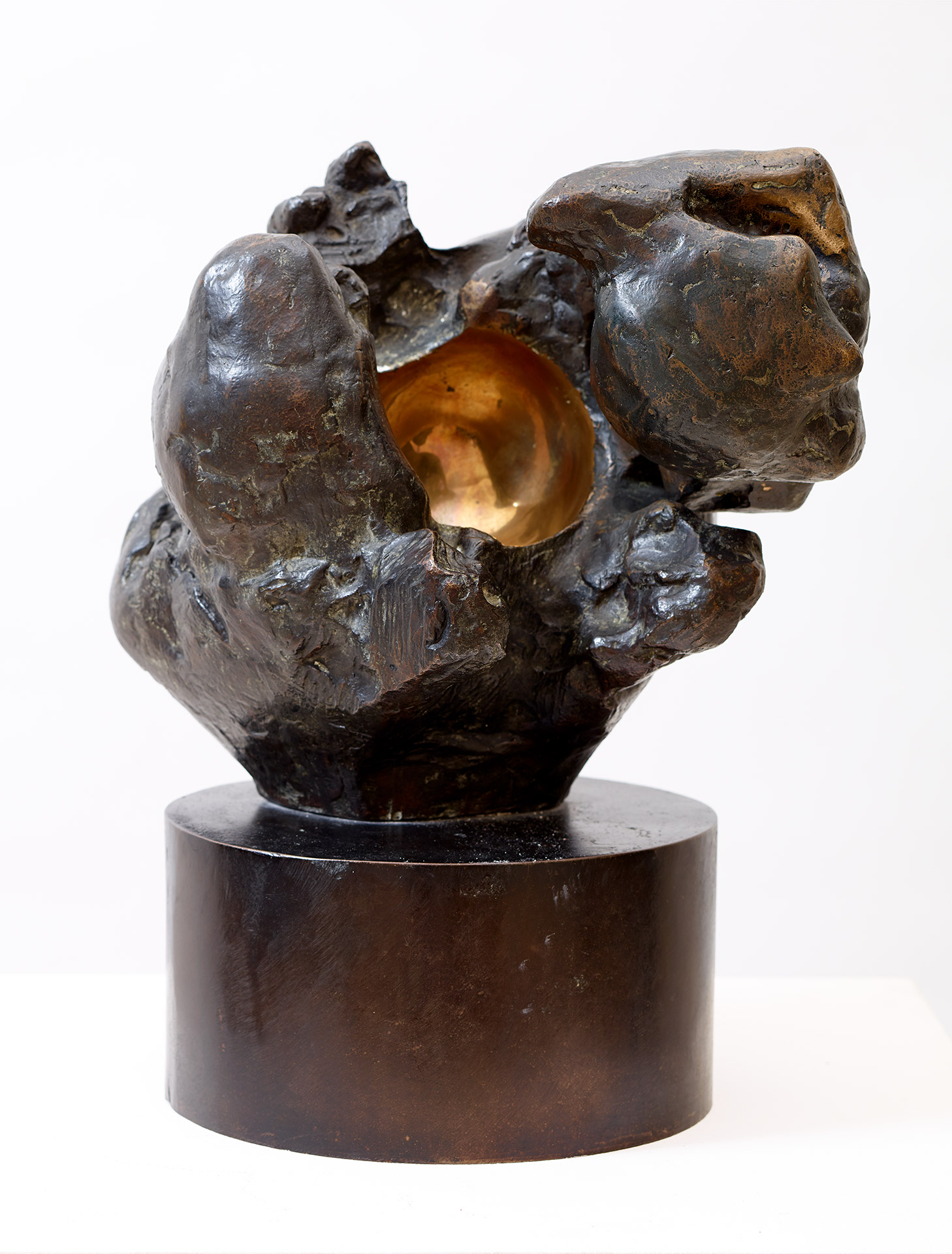
Pablo Serrano (Crevillén, Teruel, 1910 – Madrid, 1985)
Man with a Door
Circa 1965
WORK INFORMATION
Bronze, 27 × 24.5 × 23 cm
Pablo Serrano was one of the most important sculptors involved in the renewal of Spanish art that began in the 1950s. Although painting dominated the avant-garde drive for innovation, various sculptors, including Serrano, pushed for a no less radical renewal in their own field.
After training in Zaragoza and Barcelona, Serrano travelled to Uruguay and settled in Montevideo in 1930. Although his early years were marked by academicism, he leaned towards a style of expressive figuration until he met Torres García in 1946 and became interested in abstraction. Serrano kept up an intense pace of creative activity in Uruguay until 1955, when he returned to Spain. Two years later he joined the El Paso group, where he and Martín Chirino became leading advocates for the renewal of contemporary Spanish sculpture. However, he left the group one year later.
Serrano's work as a sculptor oscillated between expressive figuration and abstraction. His portraits, such as those of Antonio Machado, Gaya Nuño and Camón Aznar, are examples of expressive portraiture taken to extremes. Serrano was always able to harness the full expressive potential of his material, especially bronze, achieving a remarkably plastic effect in his textures and surfaces.
The artist's sculptures frequently underscore the contrast between the aggressive, untamed, "raw" form of their surfaces and the polished brilliance of their orifices or hollows, as illustrated by Hombre con puerta [Man with a Door]. The work's outer surface has a tactile, spontaneous material quality at variance with the polished smoothness of the inner cavity. These material contrasts create a spatial and plastic opposition between interior and exterior, an effect on which the sculptor elaborated extensively. This juxtaposition of matter and void, mass and space, is what turns many of his sculptures into mediators between a material reality and a space created from inside the sculpture. [Víctor Nieto Alcaide]

